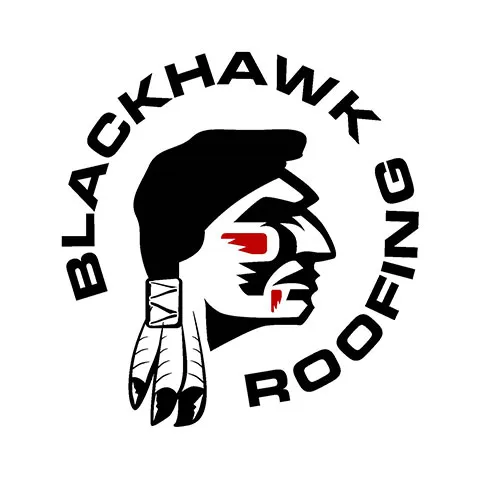
What do you do during roof maintenance?
We'll clean gutters, remove debris, inspect the interior and exterior of your home, repair damage, and replace missing or damaged shingles.


Introduction
Regular roof maintenance is essential to prevent problems from becoming more extensive and costlier to repair, and it involves cleaning gutters, removing debris, inspecting the interior and exterior of your home, repairing damage, and replacing missing or damaged shingles.
Maintaining your roof is one of the most critical parts of home maintenance, yet it is often overlooked until a significant issue arises. Regular roof maintenance is crucial to prevent minor problems from becoming major ones. Blackhawk Roofing can help you identify and fix existing problems before they worsen or cause further damage to your property. In this article, we will discuss what happens during a typical roof maintenance visit and why it is essential to schedule one regularly.
What happens during a roof maintenance service?
A typical roof maintenance service involves several steps to ensure that your roof is in good condition and can withstand various weather conditions. Here is an overview of what to expect from professional roof maintenance:
- Mold removal. Mold growth can cause damage to your roof by creating cracks and holes that allow water to enter the building. This can lead to further problems, such as leaking ceilings and rotting woodwork. It can also cause health problems for anyone who lives there. The best way to ensure the mold removal is done correctly is to hire a professional with experience with this type of work.
- Gutter cleaning. It’s essential to keep your gutters clear of debris so water doesn’t pool inside them and cause damage. This can be done with a regular gutter cleaning service to prevent leaves from clogging up your gutters in the first place and stop water damage. Gutter cleaning should be done twice a year to remove debris, leaves, and other items that may have been collected in them. If you have an older gutter system, it may be time to replace them with new ones made from steel or aluminum.
- Debris removal. Wind and rain can blow debris onto your roof, and if you don’t have a roofing professional remove it, it can become a bigger problem. They will clean the surface, ensuring dirt and debris won’t enter your attic or home. The cleaning process includes sweeping off any loose debris and water and making sure that moss doesn’t grow in between shingles.
- Interior inspection. When you call a roofing professional, they can inspect the interior of your home. This is where most damage occurs because the moisture from leaks and condensation can seep into insulation, causing it to clump and rot underlying wood framing. They can also check for ventilation issues that could lead to mold growth inside your home and other problems that may arise from poor ventilation, such as ice dams in cold weather climates. Water stains, clumping attic insulation, and weakened wood are all signs of moisture damage that must be repaired or, in some circumstances, replaced.
- Exterior inspection. Inspecting the outside of your roof is also essential to check for signs of damage. This entails inspecting and documenting damages like missing shingles, broken flashing, and cracked caulk. A thorough inspection will also include an assessment of each layer of shingles on your roof, as well as an inspection of the underlayment, flashing, and insulation located between each layer of shingles. Your technician will inspect the chimneys, skylights, and plumbing stacks for loose or damaged flashing.
- Repair estimate. Once the condition of your roof has been thoroughly inspected, your roofing contractor will review the results with you and discuss the following measures to be taken, including when the next roof maintenance should be planned. If the roof requires repairs, you will be provided a written estimate of the expenses. Some minor repairs may be able to be completed that day, with your approval.
- Shingle replacement. If shingles are missing or damaged beyond repair, they must be replaced with new ones. Otherwise, you risk water damage that could lead to mold growth inside your home or even structural damage to the walls or ceiling from water seepage.
- Roof flashing installation. Roof flashing is installed where two pieces of material come together, such as around doors and windows or over chimneys and vents. It helps prevent water damage by collecting moisture that builds up between these areas and directing it away from the structure of your home.
Conclusion
Regular roof maintenance is necessary for any building to protect it against future damage and deterioration. With the help of a professional roofing contractor, you can prevent minor problems from turning into major ones and save on repair costs in the long run. The steps involved in a typical roof maintenance visit include cleaning gutters, removing debris, inspecting the interior and exterior, repairing damages, and replacing missing or damaged shingles. Please don't wait until it's too late to schedule your next roof maintenance service to ensure your roof is in good condition to withstand whatever weather conditions come your way.
Blackhawk Roofing has built replacement roofs for thousands of residential and commercial customers in Springfield and Central Illinois. We've also done hundreds of roof repairs. Blackhawk Roofing provides outstanding value on every project. Call owner Dan Schnell at 217-741-6251 to schedule a Free Estimate.

Licensed Roofing Contractor
Blackhawk Roofing is a licensed, certified, and insured roofing contractor. We specialize in residential roofing and EPDM commercial roofing. We have repaired or replaced thousands of old and damaged roofs in Springfield and Central Illinois.
Latest posts
Proud to be the best roofing contractor in Springfield





